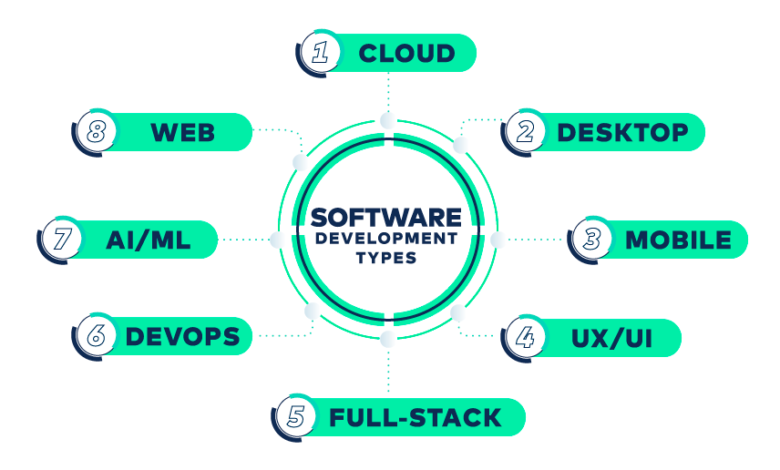
Using software to enhance projects, improve customer experiences, or boost employee productivity is incredibly appealing. However, if your business isn’t focused on software development, it can be challenging to determine which type is best for your needs. With a wide variety of software development options, each targeting different aspects, understanding these nuances can help you leverage them effectively—especially when considering software outsourcing to access specialized expertise and resources.
What Is Software Development?
Software development involves creating programs that run on devices such as phones, tablets, and laptops. Developers use code to transform your project idea into scalable and efficient software that is easy to maintain and userfriendly. They can also modify existing software to enhance its functionality. Whether you have an issue with software or want to build something new from scratch, it all falls under software development.
When you seek software development services, you start by sharing your project idea. Developers will then analyze it and determine the best approach for creating your software, including the specific type required. Next, they create a prototype to give you a clear idea of the software’s design. Once you approve the prototype, developers will utilize various development types to build and test your software.
The Types of Software Development
The type of development chosen by a developer depends on several factors, including:
The project idea
The platform where the software will run
How users will interact with it
Here’s an overview of the different types of software development:
1. FullStack Development
FullStack development encompasses both FrontEnd (layout and interactive elements) and BackEnd (underlying structures) development. Engaging FullStack specialists ensures that your software is userfriendly while also being built on a robust foundation for efficiency and scalability.
2. User Experience (UX) and User Interface (UI) Development
While both UX and UI focus on user interaction, they differ significantly:
User Interface (UI): This type centers on the visual elements of the software and user interactions, striving for a smooth and intuitive experience.
User Experience (UX): This focuses on the overall usability of the software, ensuring users can navigate and utilize it effectively based on their preferences.
3. Artificial Intelligence (AI) and Machine Learning (ML)
AI software development creates systems that mimic human behavior, while ML involves building models that analyze large datasets to identify patterns and provide insights. Both are particularly useful for automating lowskill, repetitive tasks.
4. Cloud Software Development
Cloud software runs on online servers, making it accessible via the internet. For instance, Gmail is a popular example. This type of development typically allows for scalability and compatibility across various devices. Native programming can be requested for software limited to specific devices.
5. Desktop Software Development
This type focuses on creating applications for desktop and laptop computers. Developers specializing in this field understand the nuances of different operating systems, such as Windows, Linux, or Mac, allowing for tailored software solutions.
6. Web Software Development
Web software refers to applications accessed through web browsers over the internet. This type is inherently deviceagnostic, working on any device with an internet connection and a browser. Web development encompasses FullStack, UX, and UI development with a focus on internetbased applications.
7. Mobile Software Development
Mobile development involves creating applications specifically for smartphones. Developers often specialize in operating systems like Android or iOS, ensuring a consistent user experience across various devices.
8. DevOps
DevOps combines software development and IT operations to enhance performance and reliability. This methodology streamlines the software deployment process, leading to more efficient delivery.
Key Differences Within Software Development Types Based on Device
Whether you’re improving existing software or starting from scratch, each type—FullStack, UX/UI, AI/ML, Cloud, Desktop, Web, Mobile, and DevOps—serves a unique purpose and addresses different aspects of software creation and user interaction. Understanding these types will help you identify the specific software development services your project requires.
Now that you’re equipped with knowledge about software development, you can make informed decisions and choose the right service providers, such as Devnatives, for your software needs.





